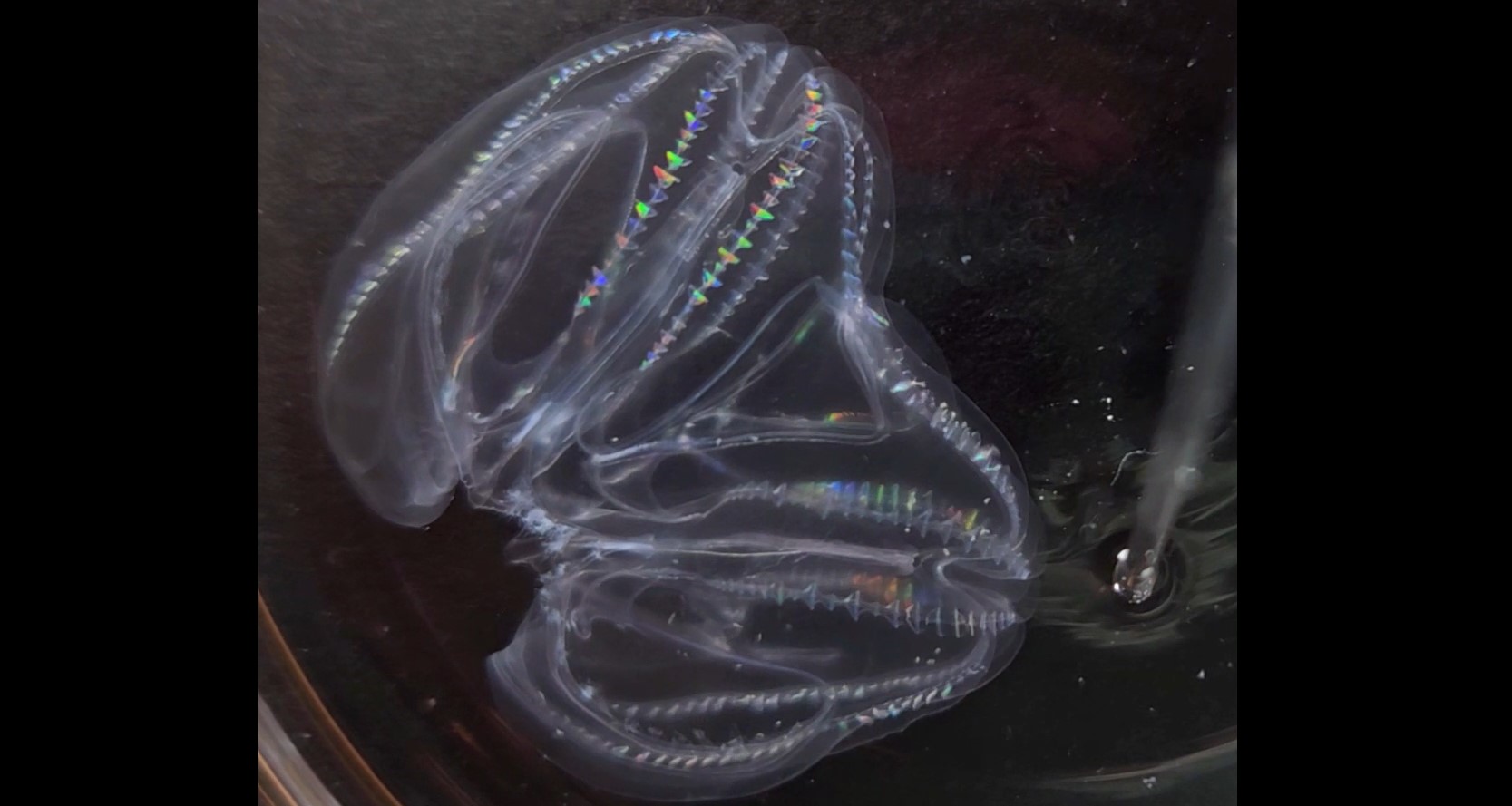Media release
From:
After injury, these comb jellies can fuse to become one
Researchers reporting in the Cell Press journal Current Biology on October 7 have made the surprising discovery that one species of comb jelly (Mnemiopsis leidyi) can fuse, such that two individuals readily turn into one following an injury. Afterwards, they rapidly synchronize their muscle contractions and merge digestive tracts to share food.
“Our findings suggest that ctenophores may lack a system for allorecognition, which is the ability to distinguish between self and others,” says Kei Jokura of the University of Exeter, UK, and National Institutes of Natural Sciences in Okazaki, Japan. “Additionally, the data imply that two separate individuals can rapidly merge their nervous systems and share action potentials.”
Jokura and colleagues made the observation after keeping a population of the comb jellies in a seawater tank in the lab. They noticed an unusually large individual that seemed to have two backends and two sensory structures known as apical organs instead of one. They wondered if this unusual individual arose from the fusion of two injured jellies.
To find out, they removed partial lobes from other individuals and placed them close together in pairs. It turned out that, 9 out of 10 times, it worked. The injured individuals became one, surviving for at least 3 weeks.
Further study showed that after a single night, the two original individuals seamlessly became one with no apparent separation between them. When the researchers poked at one lobe, the whole fused body reacted with a prominent startle response, suggesting that their nervous systems also were fully fused.
“We were astonished to observe that mechanical stimulation applied to one side of the fused ctenophore resulted in a synchronized muscle contraction on the other side,” Jokura said.
More detailed observations showed that the fused comb jellies had spontaneous movements for the first hour. After that, the timing of contractions on each lobe started to synch up more. After just two hours, 95% of the fused animal’s muscle contractions were completely synchronous, they report. They also looked closely at the digestive tract to find that it also had fused. When one of the mouths ingested fluorescently labeled brine shrimp, the food particles worked their way through the fused canal. Eventually, the comb jelly expelled waste products from both anuses, although not at the same time.
The researchers say it remains unclear how the fusion of two individuals into one functions as a survival strategy. They suggest that future studies will help to fill the gaps in understanding, with potential implications for regenerative research.
“The allorecognition mechanisms are related to the immune system, and the fusion of nervous systems is closely linked to research on regeneration,” Jokura says. “Unraveling the molecular mechanisms underlying this fusion could advance these crucial research areas.”
Multimedia




 International
International



